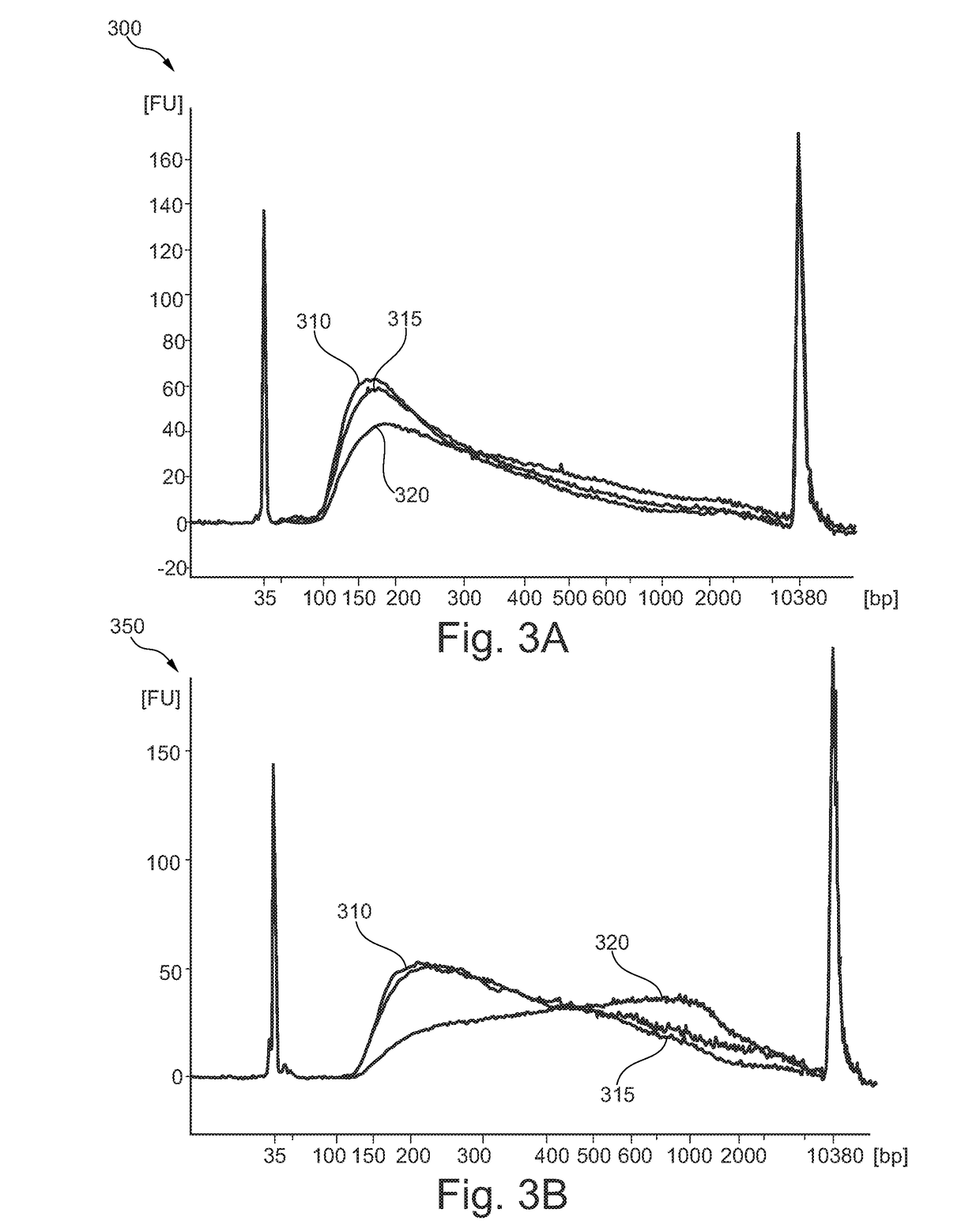Methods of analyzing nucleic acids
- Summary
- Abstract
- Description
- Claims
- Application Information
AI Technical Summary
Benefits of technology
Problems solved by technology
Method used
Image
Examples
Example
[0029]The presently disclosed subject matter is related to U.S. Patent Pub. No. 20050153333, entitled “Selective terminal tagging of nucleic acids,” published on Jul. 14, 2005; U.S. Patent Pub. No. 20100297643, entitled “Terminus-specific DNA modification using random-sequence template oligonucleotides,” published on Nov. 25, 2010; and U.S. Patent Pub. No. 20140194324, entitled “Sample preparation of a solid support,” published on Jul. 10, 2014, the entire disclosures of which are incorporated herein by reference.
[0030]As used herein the term “at least a portion” and / or grammatical equivalents thereof can refer to any fraction of a whole amount. For example, “at least a portion” can refer to at least about 1%, 2%, 3%, 4%, 5%, 6%, 7%, 8%, 9%, 10%, 15%, 20%, 25%, 30%, 35%, 40%, 45%, 50%, 55%, 60%, 65%, 70%, 75%, 80%, 85%, 90%, 95%, 99%, 99.9% or 100% of a whole amount.
[0031]As used herein, the term “about” means+ / −10%.
[0032]As used herein, the term “elevated temperature” means a tempe...
PUM
| Property | Measurement | Unit |
|---|---|---|
| Temperature | aaaaa | aaaaa |
| Temperature | aaaaa | aaaaa |
| Temperature | aaaaa | aaaaa |
Abstract
Description
Claims
Application Information
 Login to View More
Login to View More - R&D
- Intellectual Property
- Life Sciences
- Materials
- Tech Scout
- Unparalleled Data Quality
- Higher Quality Content
- 60% Fewer Hallucinations
Browse by: Latest US Patents, China's latest patents, Technical Efficacy Thesaurus, Application Domain, Technology Topic, Popular Technical Reports.
© 2025 PatSnap. All rights reserved.Legal|Privacy policy|Modern Slavery Act Transparency Statement|Sitemap|About US| Contact US: help@patsnap.com



